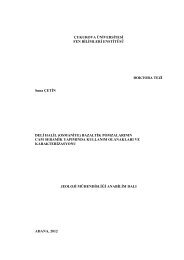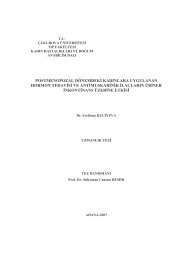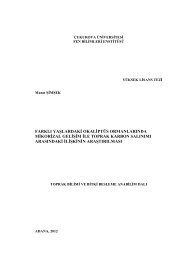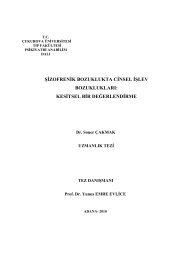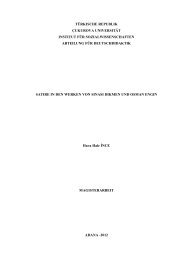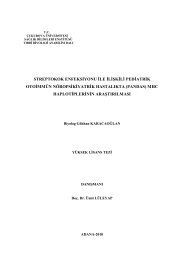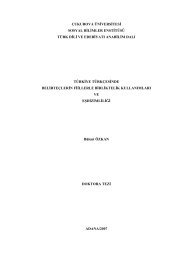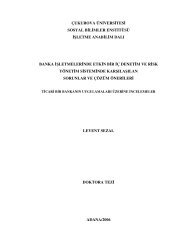ÇUKUROVA UNIVERSITY INSTITUTE OF NATURAL AND APPLIED ...
ÇUKUROVA UNIVERSITY INSTITUTE OF NATURAL AND APPLIED ...
ÇUKUROVA UNIVERSITY INSTITUTE OF NATURAL AND APPLIED ...
Create successful ePaper yourself
Turn your PDF publications into a flip-book with our unique Google optimized e-Paper software.
3. FUNDAMENTALS <strong>OF</strong> DVR Mustafa İNCİ<br />
signal firstly. In this thesis, EPLL, SRF and SOGI-PLL methods which are<br />
comprehensively expressed in Chapter 4 are used to generate reference values.<br />
3.3.5. Voltage Control Methods<br />
The accuracy and dynamic behavior of the pulse width modulation and<br />
voltage drop due to switching devices and passive components in DVR directly<br />
affects the injected voltage generated by DVR. In available literature, there are two<br />
voltage control systems used in the DVR applications: open loop and closed loop.<br />
3.3.5.1. Open Loop<br />
Usually, the control voltage of the DVR is derived by comparing the<br />
incoming supply voltage against a desired reference voltage. Although system<br />
stability is guaranteed in this type of control, damping is poor, and the stability<br />
margin may not be sufficient in the presence of inverter-side filter (Vilathgamuwa et<br />
al., 2006). In this method, the control signal , is simply compared supply voltage<br />
against a reference voltage.<br />
Figure 3.16. Open Loop Control Method<br />
V<br />
i<br />
i<br />
( V −V<br />
)<br />
= k<br />
(3.16)<br />
ref<br />
s<br />
In this control system, the voltage at source side of the DVR is compared with<br />
the voltage at load-side reference voltage. Error between source-side and load-side<br />
voltages is used to compare with a triangle signal in PWM module.<br />
37



